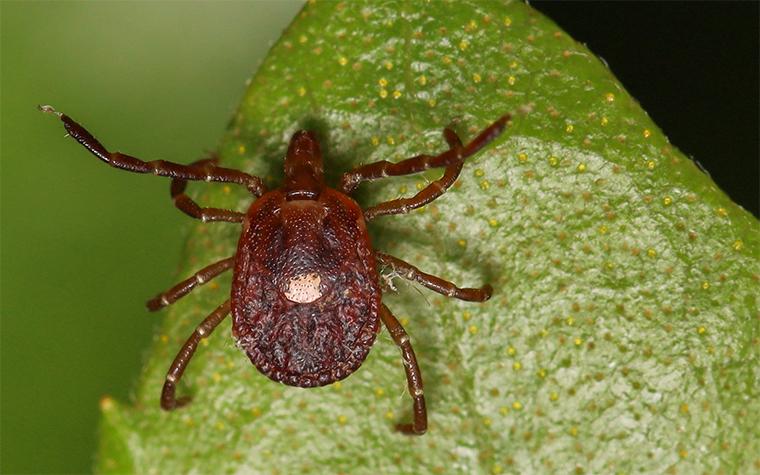Reports of alpha-gal syndrome are on the rise.
COLUMBIA, Mo. – Due to the nature of their work, livestock farmers are often exposed to ticks, which can cause serious health issues, including alpha-gal syndrome, says Craig Payne, director of Extension Veterinary Medicine at the University of Missouri.
“Personal tick protection is important, but producers should also consider adopting tick control measures on the farm,” says Payne. “These measures include reducing tick habitat and implementing practices that decrease tick populations on livestock.”
Exposure to ticks increases the risk of developing alpha-gal syndrome (AGS), which in the U.S. is primarily associated with the lone star tick (Amblyomma americanum). The saliva of the lone star tick contains a sugar molecule called galactose-α-1,3-galactose, or alpha-gal. A person bitten by this tick can become sensitized to the sugar and later have allergic reactions after consuming meat, milk or other mammalian byproducts, all of which contain alpha-gal.
Symptoms, which can range from mild to life-threatening, may include rashes, vomiting, diarrhea, difficulty breathing, low blood pressure and swelling of the lips, throat, tongue or eyelids. In severe cases, anaphylaxis can result. The length of time people remain sensitive to alpha-gal varies greatly. For some, sensitivity may last only a few months. For others, it could be years or even lifelong.
For those who become sensitized, eating meat or meat byproducts may not be the only concern. “Other exposures may also trigger reactions,” Payne says. “For example, a published case series described three cattle workers with alpha-gal syndrome who developed allergic symptoms after exposure to uterine fluid while assisting with calving.”
Although Missouri health officials are not required to report alpha-gal cases, numbers appear to be increasing, especially in rural areas. “Farmers and ranchers are especially at risk for alpha-gal due to working out in the fields where ticks live and contact can be made,” says nutrition and health specialist Eden Stewart, who leads an MU Extension interdisciplinary team studying AGS. Hunters and fishermen also are at high risk of encountering the lone star tick.
“Ticks are small, bloodsucking parasites found in great numbers in habitats where warm-blooded hosts are abundant,” says Robert Pierce, MU Extension state wildlife and fisheries specialist. Ticks require blood meals to complete their life cycle.
The later ticks are in their life cycle, the larger the animal they choose for their main course. Producers who work with pastured livestock face increased risk. Livestock producers also enter tick territory when getting on and off a tractor, checking fences and moving hay.
It is also important to treat pets that can carry ticks into homes and vehicles, says Pierce. Many livestock farmers take dogs with them to the pasture to check animals.
Livestock farmers should also consider farm habitat and manage their farm to reduce overgrown vegetation where ticks can hide. “Ticks tend to avoid bare ground and prefer areas with leaf litter and thick vegetation. Therefore, keep your lawn and property well-managed by frequent mowing, conducting prescribed burns and proper landscaping,” says Pierce.
The peak of the deer breeding season in Missouri is November, and deer can move frequently during this period, says Pierce. While deer can serve as hosts for ticks, they are not the primary reservoir for diseases like Lyme. Ticks can pick up the Lyme bacteria from smaller mammals like mice and then transmit it to other hosts, including deer, dogs or humans.
For more information on ticks and white-tailed deer, see the MU Extension publication Potential Diseases and Parasites of White-Tailed Deer in Missouri.
Ticks can detect animals by sensing body heat, moisture and vibrations, says Emily Althoff, urban entomologist for MU Extension and Lincoln University Extension. They rest on the tips of grasses and shrubs. They can’t fly or jump, but many species wait in a position known as “questing.” When a host brushes by a spot, the tick climbs aboard.
